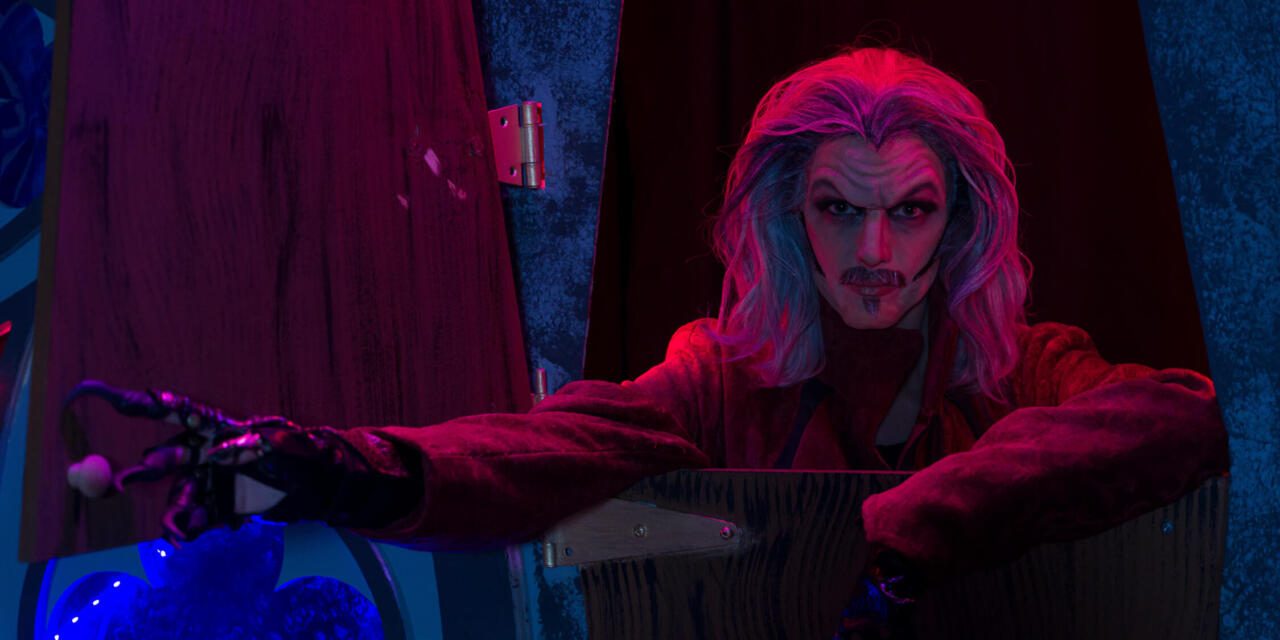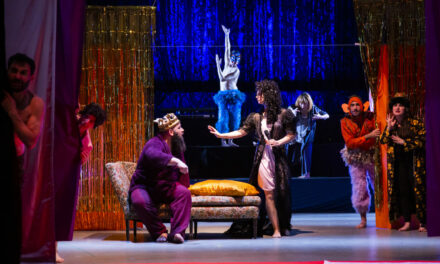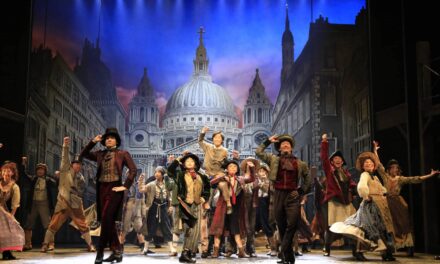Dedicated to the 125th anniversary of the legendary hero of the famous gothic novel “Dracula”, written by Bram Stoker who this year turns 175!
One hundred and twenty-five years ago the Irish writer Bram Stoker published his famous gothic novel – Dracula. The main character – Count Dracula – swiftly took the lead among the gallery of literary characters, who have gained their own independent lives. Having joined the famous and distinguished detective Sherlock Holmes, as well as such tricksters as D’Artagnan and Hamlet, Dracula quickly took over the leading position when it came to the amount of screen adaptations: he became the main hero of hundreds of movies. In those movies, Dracula appeared before the viewers in a canonical image, and, also, reformed.
How did the image of the insidious Count change and why is it so popular amongst theater and film directors, comic book creators, writers and publishers, computer game makers still?
Since the beginning of the XIX century the archetype of a vampire began to be widely used in literature, theatre and film. Initially, the artistic image of vampires in stage performances did not go beyond the scope of literary prototypes: the appearance of the monster was characterized by protruding fangs, skeletal hands with wolf claws and a pewter look of dead metallic eyes. Vampires, who specialized in seduction of innocent young women of the Victorian era, used to be driven away with the help of garlic, and the only way to destroy them consisted in beheading with subsequent piercing of their hearts with aspen stakes. The daylight was unbearable to them, they suffered from sleepwalking. During their nightly hunts, they terrified people with their “inhuman howls” and having reached and bitten the victim, they uttered loud sucking noises.
At the end of the XIX century, in 1897, after the publication of a novel by Bram Stoker – Dracula, there has been a significant leap in the evolution of the image of a vampire, due to a certain combination of super-powers assigned to it: such as transformation into animals (therianthropy), possibility of dematerialization, moving with great speed, as well as a set of such specific features as the fear of sunlight, ability to see in the dark (noctovision), knowledge of magic spells, lack of ability to be reflected in a mirror and rejection of the Church. The writer somehow adapted the tradition, according to which the older type of a vampire could not move away from the burial place, avoiding the controversy by inventing a journey in a coffin filled with the vampire’s native soil. Thus, B. Stoker made a very important step towards the humanization of his hero: Count Dracula, having left his castle, settles down in London, thereby taking the first step towards socialization.
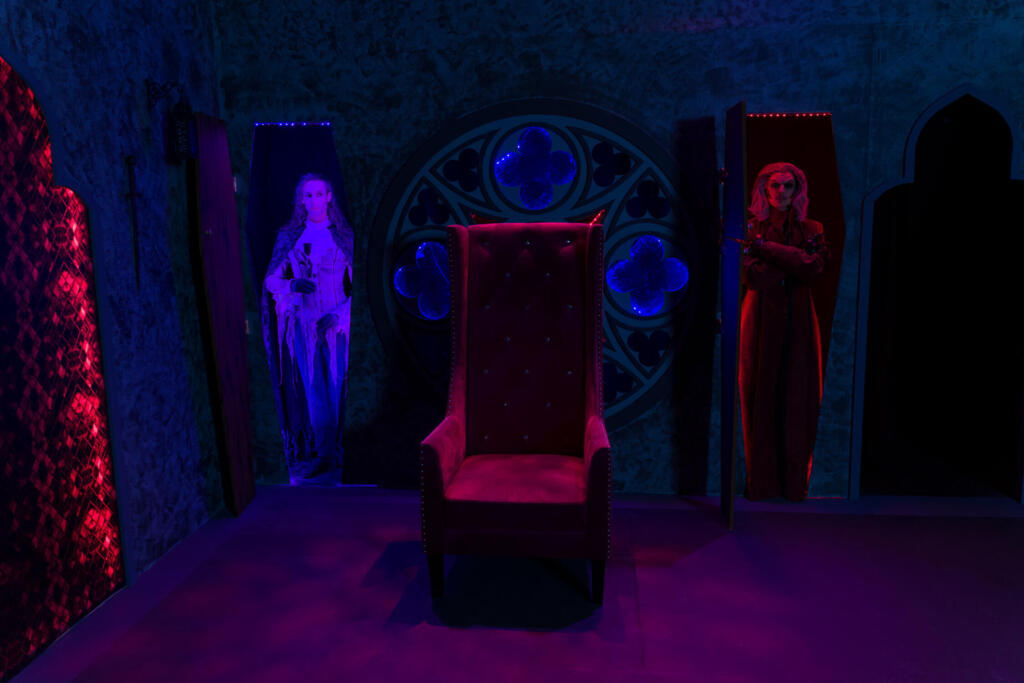
Dracula: Finding of a Shadow, Scott Lilly as Alucard (L), Lisa Monde as Dracula (R), PC Shane Maritch.
It is notable, that in his novel Bram Stoker never gave an exact description of Dracula’s outward appearance. Therefore, Dracula’s image became a collective one, created by the actors who played the role over the years. The first actors to play Count Dracula were Edmund Blake and Raymond Huntley in the play Dracula written by Hamilton Deane, which premiered in 1924. In the late 20s – early 30s of the XX century, various plays inspired by the novel were being performed in England, Ireland and other European countries, as well as the U.S. In 1927 the reworked and edited version of the Hamilton Deane’s play opened on Broadway. The leading role of Dracula was played by Bela Lugosi. A monster of an indeterminate appearance, beast-like, unattractive, with hairy palms and putrid breath, transformed into a youthful, well-groomed and fashionably dressed handsome seducer – a welcome guest of all Victorian soirees. His love for dark colored and black garments always made Dracula stand out. He possessed that mystical aura, which made him both attractive and repulsive at the same time. The image, created by Lugosi, became the central character of the 1931 movie of the same name, directed by Tod Browning and Karl Freund. Bela Lugosi, once again playing Count Dracula, appeared before the viewers as a vampire-aristocrat, who was ominous and treacherous, cold hearted and ruthless, spoke with a heavy Eastern-European accent. And was very sexy.
In the movie Nosferatu: A Symphony of Horror directed by F. Murnau (1922), Count Dracula was actually named Count Orlok. He already did not reflect in mirrors and suffered from the sunlight. Max Schreck played the main role. The actor managed to create a repulsive type of a bald freak with pointy ears that stuck out to the sides. He travelled accompanied by the rats and was interested in women only because he enjoyed drinking their blood. The British movie Dracula (1958), directed by Terence Fisher, was quite striking to the viewers – they were surprised to meet a Dracula who had impeccable manners, played by Christopher Lee. In 1979 a young director John Badham made a movie Dracula starring Frank Langella. The character turned out to be so humane, affectionate, romantic and attractive, so much so that the critics considered it to be a flop since such a character destroyed the whole idea of the expediency of fighting against the vampires. The main hero of the legendary film by Francis Ford Coppola Bram Stoker’s Dracula (1992), where Gary Oldman brilliantly portrayed the Romanian voivode – Vlad Tepes Dracula, once again had at times a repulsive outward appearance but a good soul. An egoist to the very marrow of his bones, but love does wonders and delivers him from his inner filth. The concept of the two sides – the human and the vampiric, coexisting in Dracula, received a great and powerful development.
As a result, we see the stereotypical image of Stoker’s Dracula: an aquiline nose, a high forehead, eyes with a scarlet hue of the sclera, thick gray hair, thick eyebrows, a sensual mouth that barely moves, hairy palms and long thin fingers with long nails. The preference in the style of clothing varies but the color of the clothing is primarily black. This vampire differs from its predecessor in the best possible way: he is quite anthropomorphous, however excessively pale and amimic. He can distance himself from the burial grounds, traveling with a coffin filled with native soil from his gravesite. In the row of actors, who portrayed Dracula, one must mention Klaus Kinski, Leslie Nielsen, Gerard Butler, John Malkovich, Richard Roxburgh, Dominic Purcell and others. Each of them added something of their own to the collective image of the Сount, the evolution of which continues.
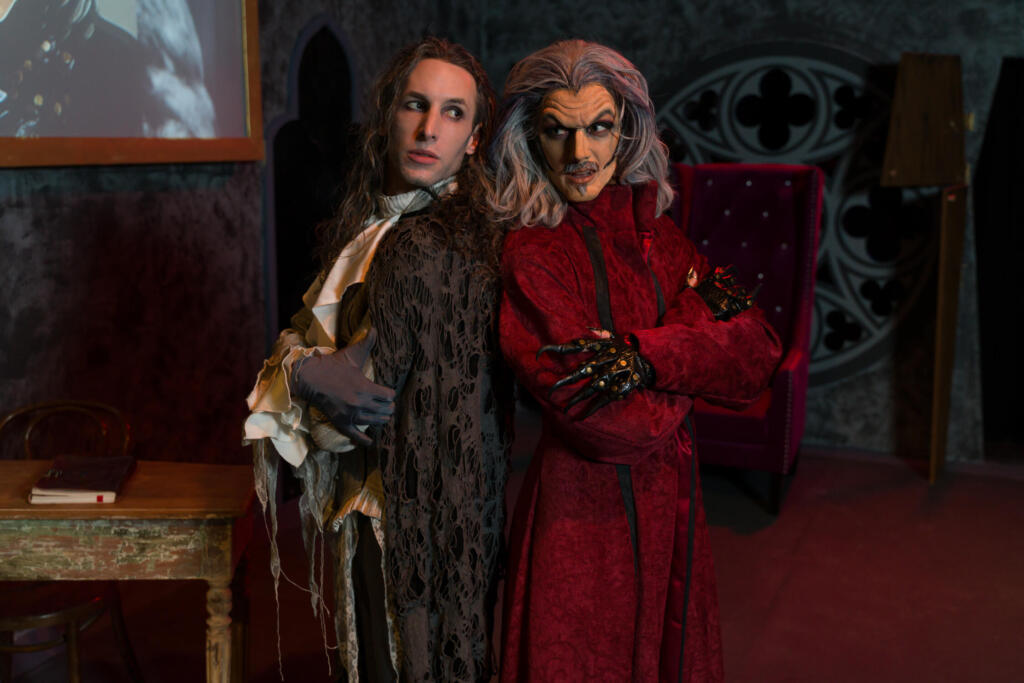
Dracula: Finding of a Shadow, Scott Lilly as Alucard (L), Lisa Monde as Dracula (R), PC Shane Maritch.
The psychological portrait of the creature would, for the most part, remain the same: unsociable, gloomy, incommunicative. Authoritative, artful, merciless, a one-woman man. Self-confident, perceives himself like a master of the world. When it comes to personality qualities, there were more adjustments. Thus, initially, a vampire – the personification of all Evil, is developing its “human” alter ego. Its original self – the image of a violent vampire, the alter ego – a nobleman. One should mention the drift when it comes to the relation of a vampire toward death. Life causes Dracula much suffering. He dreams of death. In the original novel, Dracula is turned into ashes. In the sequel by the great-grandnephew of Bram Stoker, Dacre Stoker, – Dracula the Un-Dead (2009), according to Bram’s will, expressed in his notes and journals, Dracula is given an opportunity to meet with Mina once again, come to know his own son – Quincey, and spend time with the inhabitants of the Bran Castle. The reader meets with a completely altered Dracula: he is now more psychologized, evokes the feeling of compassion, especially when Dracula’s son attempts to kill his own father. However, at the end, Dracula dies…. Or does he?
The popularity of the subject grew in literature according to the reader’s demand respectively. Books about vampires coming out one by one, at that, Bram Stoker’s novel Dracula confidently retained the top line of the rating charts of all vampire novels. The number of theatrical productions is hard to establish, there were many. One can state though: the interest in Count Dracula never fades but keeps growing.
In accordance with the value orientations of society and its dispositions, Dracula, as the contemporary hero of new literary works, scripts and screenplays, is given a certain social status, as well as some mainstream qualities: the feelings of confusion, disappointment and uselessness, the lack of hope or faith, appearance of the rudimentary empathy. Furthermore, the reader and spectator votes on the “de-demonization” of vampires in general, their allotment with human feelings, emotions and suffering.
The interest in this many-sided character found its reflection in musical theater as well. There are over two hundred musicals, where the vampire – is the central character. Most of those musical shows are based on or inspired by Bram Stoker’s Dracula. The most famous vampire musicals are: the Broadway production of Dracula, the musical by Frank Wildhorn (2004), the German Dance of the Vampires/Tanz der Vampire by М. Kunze and J. Steinman (1997), the Czech Republic’s Dracula. The legend returns/Dracula. Legenda se vraci by Karel Svoboda (1995, remake 2003), the Canadian Dracula: A Chamber Musical (1997), as well as four rock operas – American (2003), Italian (2005), Canadian (2006) and French (2011). How did the image of Count Dracula transform in them?
In the pre-2000s works, we see the canonical Stoker’s image of Dracula. Yes, he is slowly but surely losing his “inhuman” nature, enriches himself with positive qualities, understandable to humans. The degree of the romantic veil is going up. Once Dracula crosses the century rubicon, he transitions from a romantic character into a realistic one, who is not a stranger to anything human, with certainty. The danger transitions into attraction, his superpowers are being used in the name of good. On top of that, he’s wise, knowledgeable and immortal. When it comes to the latter, Dracula is trying to find the answer to the eternal question: to be or not to be…
So then, the negative connotations of Evil change the vector. Which is quite explicable: in the modern world, the lines between the definitions of Good and Evil have been blurred and they become interchangeable. Hence the attempt of authors of musicals to somehow change the finale of Stoker’s novel, where Evil has been punished. What happens in the novel: Dracula turns to ashes. In the Dance of the Vampires /Tanz der Vampire musical the finale has been changed. The vampires conquer all and celebrate their victory, promising in their final song of the show to conquer the whole world and inviting everyone to join the party.
There are other versions of endings, where Dracula dies by hand of his beloved – Mina, who satisfies his request (like in the Wildhorn’s musical), but more often – Dracula remains as “alive” as an un-dead being can be, a warrior-prince who is doomed to wait for his one and only beloved for all eternity (Dracula: Entre l’amour et la mort), a man who understands the essence of Evil in the human understanding (Dracula, The Musical by Christer Johansson). The French authors of Dracula: l’amour plus fort que la mort/ Dracula: Love is stronger than Death created a parody on the destruction of Evil in the finale: Dracula comically squirms in agony next to the sobbing Mina, who killed him by putting a stake through his heart. The ensemble performs a life-affirming aria, urging everyone to celebrate life in spite of death.
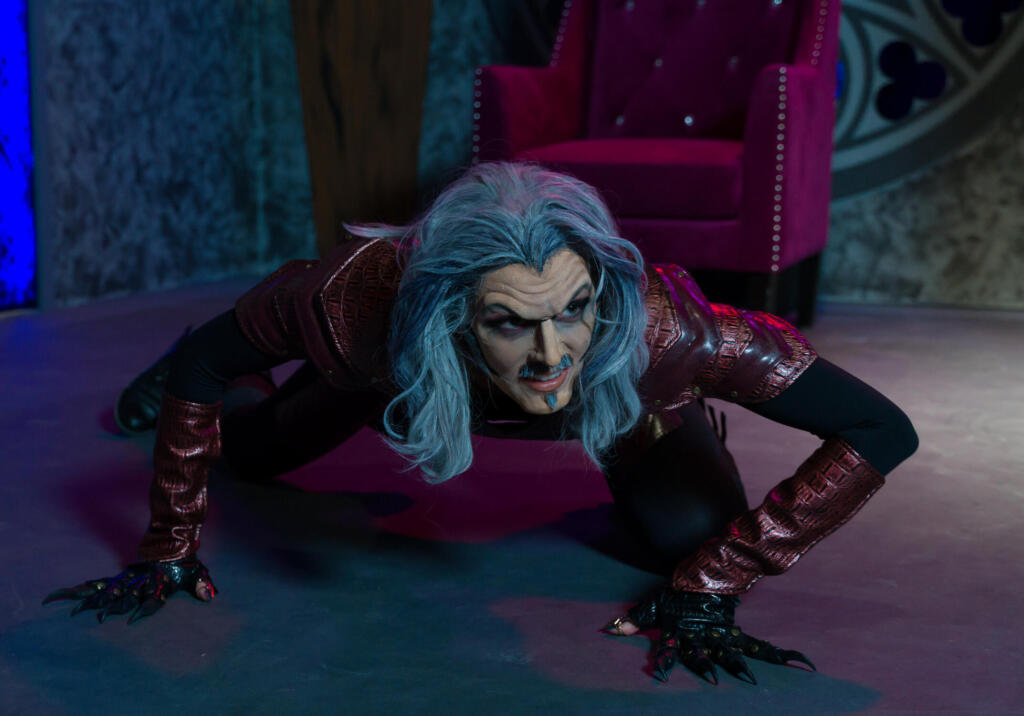
Dracula: Finding of a Shadow, Lisa Monde as Dracula, PC Shane Maritch.
Why the most successful productions about Dracula were Dracula. The Legend Returns and Frank Wildhorn’s Dracula? It is evident, that in these works in particular, one can single out the stages of evolution of the image of Dracula. If in 1991 (Dracula, the Musical by Angel Mahler/Pepe Cibrian) the authors have introduced a new, Stoker’s image of Dracula, which was very different from the previous images of vampire-monsters, then in Dracula. The legend returns the creators have shown the possible limits of the image’s transformation, including looking into the nearest future. In Wildhorn’s musical, the final new status of Dracula as a big part of the social consciousness is established. The canonical image of Dracula gets amplified and gradually gets diffused and becomes History. It is obvious, that the fans of musicals will meet with Dracula many more times, and he will look younger, fresher and completely modernized. Or the spectators will come face to face with Dracula’s heirs and descendants. And if the spectators have already seen the sequel to The Phantom of the Opera on the theater stage in the musical by Andrew Lloyd Webber Love Never Dies (2011-2012), based on the literary sequel The Phantom of Manhattan by Frederick Forsyth, it would be fair to assume the possibility of coming across a project with a catchy name Dracula Returns: Alive and Hating It sometime soon in the future.
And so, the evolution of the image of Dracula occurs due to the gradual building of the humanistic traits, socialization and psychologization of the character. The process doesn’t end there.
The 125th anniversary of Dracula did not go unnoticed in New York. An original musical play Dracula: Finding of a Shadow produced by the Onomatopoeia Theater Company and the Monli International Company LLC, directed by Thomas R. Gordon and Lisa Monde premiered Off-Broadway this Halloween season. As of today, it is the one and only play inspired by all three books -the original novel by Bram Stoker, as well as the sequel and prequel, written by Dacre Stoker. At the Amateur Comedy Club in NYC there took place a production of the very first play Dracula, written by Hamilton Deane and based on the novel by Bram Stoker. It was the later version of the play, to be more exact – the one that was reworked by John L.Balderston. The play successfully ran on Broadway in 1927. Debra Whitefield directed the most recent production.
And on November 16th 2022 at the Players Club, Dacre Stoker will host the literary evening under a poetic name Stoker on Stoker: the Mysteries Behind the Writing of Dracula. The man of the moment himself – Count Dracula, agreed to give an interview to Dacre Stoker and to answer the questions of the guests.
This post was written by the author in their personal capacity.The opinions expressed in this article are the author’s own and do not reflect the view of The Theatre Times, their staff or collaborators.
This post was written by Lisa Monde.
The views expressed here belong to the author and do not necessarily reflect our views and opinions.

